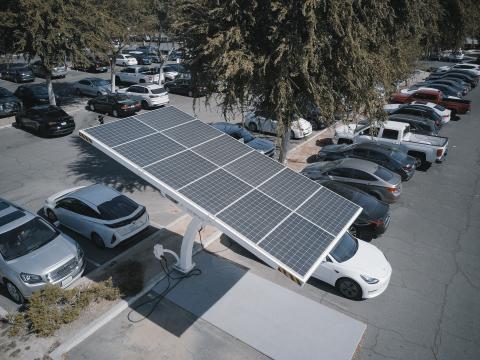Are microgrids the answer to increased dealer electricity needs?

It’s time to start thinking about the future of your dealership’s vehicle charging needs.
Experts estimate that 50 percent of new vehicle sales will be electric by 2030 and that there will be 7 million electric vehicles on the road by 2025, compared to just 1.7 million in 2020.
Whether we like it or not, the EV revolution is coming. Maybe it won’t be as fast as the “experts” predict or the current administration would like, but it is coming. As a result, dealers will need more charging stations and electricity capabilities in order to accommodate the growing number of electric vehicles they will be selling.
Some manufacturers are already requiring their dealers to install fast chargers for electric cars, but the process isn’t as simple as getting it installed, which is expensive on its own. Many dealers who have tried to install fast-charging stations have had to upgrade their electric service with the utility, creating even larger financial burdens to dealers. Plus it takes months, or even years, for the utility companies to actually complete the requests for increased power, causing delays in charging station installation.
Case in point -- California is experiencing brown-outs now! What will happen in the near future with their rapidly increasing EV population, which is surging because their gas prices are over$5/gallon?
Even after all that is said and done, will the electric utility companies be able to keep up with kilowatt needs long term? Rolling blackouts are already a problem out west. As more electric vehicles hit the road and electric demand increases, both personally and commercially, many are concerned about whether or not the utility companies will be able to provide the power needed without interruption.
One solution for dealers is installing their own microgrids. While the up-front cost is high, the long term reliability may be worth the investment.
What are some benefits of having a microgrid?
-
Microgrids reduce electricity costs
-
Microgrids reduce reliance on the utility for all power
-
Dealership won’t lose power during an outage
-
Microgrids often use renewable energy sources, reducing emissions and costs
-
Microgrids can provide additional revenue streams by offering public charging
Ehrlich Toyota in Colorado installed a solar microgrid after experiencing ongoing power outages. The dealership was losing money every time the power went out, leaving the entire store at a standstill, so the owner took matters into his own hands by installing his own microgrid, which will provide long term power stability.
But what about locations that don’t get a ton of sun year-round, you know, like in New England?
Bergstrom Automotive in Wisconsin installed a microgrid powered by both solar and a natural gas generator. The microgrid provides up to 23 megawatt hours of solar energy per year, which is enough to charge roughly 500 electric vehicles. When not in use, the excess power is stored in batteries. And when solar isn’t available, the natural gas generator is used to create needed power for charging vehicles.
Of course there is a downside to all of this. As expected, startup costs are expensive. The installation of a solar microgrid can cost $2-to-$4 million per megawatt, depending on your dealership’s needs and location. Again, we see exponential costs to dealers to bring their stores up to snuff with little-to-no help from the OEMs or the government that is mandating the switch to electric vehicles
The good news is that there are solar companies that will install the microgrid on the dealership property and lease the array to you with an option to buy the microgrid several years later. We recently had firsthand experience when selling Foster Motors in Middlebury, VT. The Fosters had signed a lease with options with Solar Array out of Albany, NY. The “net” result was that the array produced enough juice to cover all their electrical needs for a very fair lease cost!
But what’s a dealer to do? You will have to provide EV charging at your dealership. The question is, do you spend a couple hundred grand now to increase your electric service and install traditional charging stations, or do you spend $1 million+ on a microgrid that can solve your power needs long term?
One key is that during OEM-required facility upgrades, spend that $100K during construction to save on installation costs in the process. That’s what East Hartford Kia did in 2019 when doing a major facility renovation! They are well prepared to install today’s fast charging stations at a large cost savings.
And what about the small dealership who can’t afford to do either? What happens to them? They could join a group effort with other dealers in their area to lease or purchase an array for the group, thus sharing the costs. But if that’s not an option, they’re either forced to make a tough financial decision, sell to a larger group with deeper pockets, or just close their doors altogether.
No matter what, dealers can’t keep following the “wait-and-see” methodology with EV charging. Now is the time to be proactive and start planning how you will be compensating for increased energy needs in the not-so-distant future.






